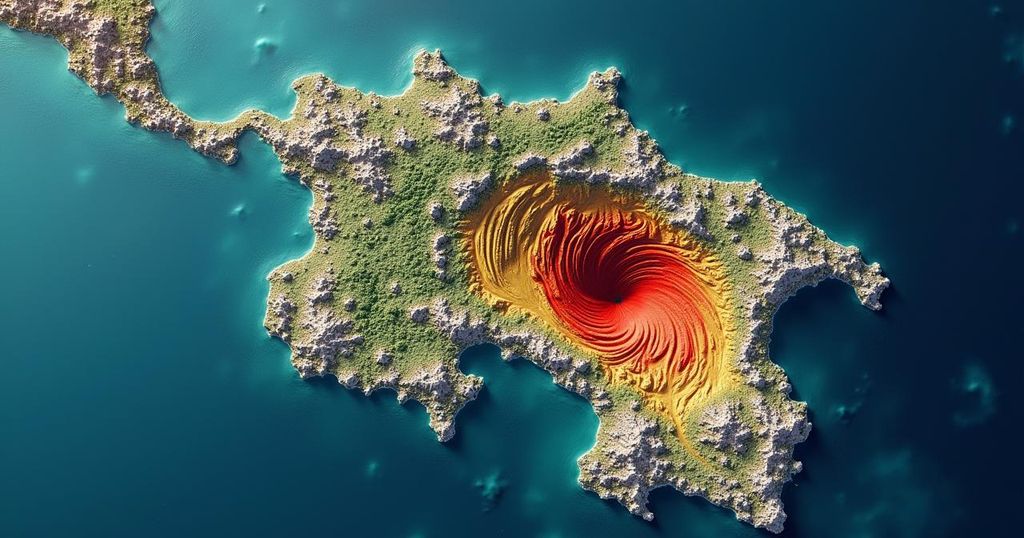Significant 6.2 Magnitude Earthquake Strikes Off the Costa Rican Coast
A 6.2 magnitude earthquake struck off the coast of Costa Rica on October 12, 2024, with a depth of 18 km. The quake primarily affected towns in Guanacaste Province, resulting in moderate to light shaking felt by over 1.9 million people. No tsunami threats emerged, and the USGS issued a green alert, indicating low likelihood for fatalities or significant damage.
On October 12, 2024, a significant earthquake measuring 6.2 on the moment magnitude scale struck off the coast of Costa Rica at 17:43 local time. The earthquake, shallow in nature, occurred at a depth of approximately 18 kilometers (11.2 miles). The United States Geological Survey (USGS) confirmed the event, with the European-Mediterranean Seismological Centre (EMSC) corroborating the magnitude and depth. The epicenter was recorded 41.4 kilometers (25.7 miles) northwest of Tamarindo, a town with a population of 6,375, and 67 kilometers (41.6 miles) west-northwest of Santa Cruz, which has a population of 12,281. It was also located 75.9 kilometers (47.1 miles) west of Liberia, a city with 45,380 residents, all situated within Costa Rica’s Guanacaste Province. An estimated 69,000 people experienced moderate shaking, while around 1,856,000 reported light shaking from this seismic event. Fortunately, there were no tsunami threats associated with the earthquake. The USGS has classified the potential for shaking-related fatalities and economic losses as a Green Alert, indicating a low likelihood for significant casualties or substantial damage. Despite this reassurance, it is notable that the local populations predominantly inhabit structures that are particularly susceptible to seismic forces, primarily consisting of mud walls and adobe blocks, which are highly vulnerable in such situations. Historical seismic activity in this region has also led to secondary hazards including landslides and liquefaction, which may exacerbate the impact of earthquakes in the area.
The region of Guanacaste, Costa Rica, is known for its geological activity due to the Pacific Ring of Fire, where tectonic plates frequently interact, resulting in earthquakes and volcanic activity. Given the area’s vulnerability to seismic events, understanding earthquake impacts and building resilience against such natural disasters is crucial for the safety of its inhabitants. The characteristics of local construction, largely consisting of materials that do not withstand strong shaking, contribute to the potential risks during seismic events, making it imperative to assess population exposure and implement appropriate engineering practices to mitigate hazards.
In summary, the 6.2 magnitude earthquake that occurred off the coast of Costa Rica on October 12, 2024, highlighted the seismic vulnerability of the region. While there was no immediate tsunami threat and the overall alert level was green, the potential for moderate shaking and vulnerability of local infrastructures remain concerns. Continued awareness and preparedness are essential for communities that reside in tectonically active areas.
Original Source: watchers.news




Post Comment